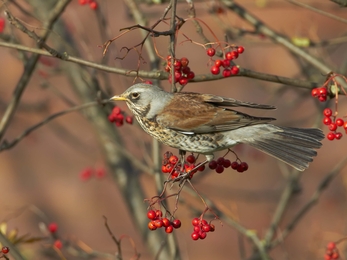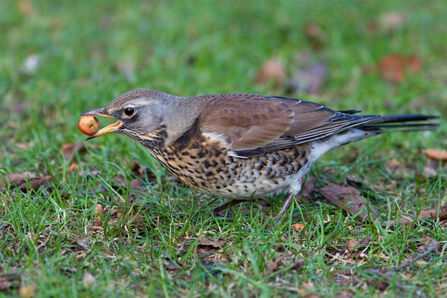One of my favourite seasonal highlights is the arrival of the migratory thrushes. As their food sources dwindle, redwings and fieldfares set off on their journey from Scandinavia, Iceland and northern Europe to spend a milder winter in the UK.
This is a significant influx of birds with around 1.4 million birds arriving, even more during particularly harsh winters or if food is scarce in their northern breeding grounds.
In our garden, we have a popular member of the thrush family, the blackbird, throughout the year, with at least one breeding pair this year. However, to see fieldfares and redwings we need to take a short walk to nearby fields which have a woodland edge. I feel very fortunate to have this on my doorstep as it’s also a good spot to hear and, sometimes, see song thrushes. A birdsong ID app, such as Merlin, is always handy if you’re spotting different species of thrushes at a distance.





